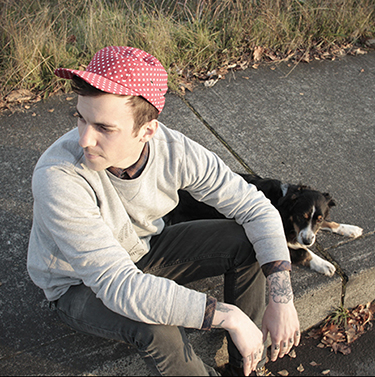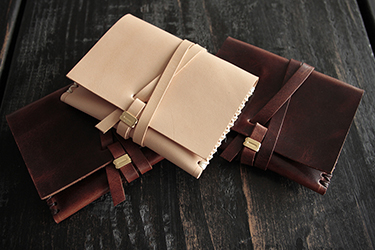Caesy Oney | Entrepreneur



Caesy Oney knows how to hustle.
Oney (Pacific Northwest College of Art, BFA Photography ’08) is the brain and drive behind Draught Dry Goods (that’s Draught like Craft), the open-ended business platform that funds Oney’s various artistic practices. In 2011, Draught Dry Goods released its first collection of leather and waxed-canvas bags, belts, wallets and other daily essentials, and has gained steady attention and press since then.
Oney’s aesthetic vision for Draught is distinctive – and at the same time, distinctively in keeping with Portland, Oregon’s heritage-cowboy aesthetic. It’s a rugged and undeniably American look – one that relies on a specific material language. Waxed canvas. Leather. Brass. It’s a language rooted in the tradition of labor and celebrates creases, dings and scuffs. Case in point: many of Draught’s products use a pale, vegetable-tanned leather that ages into a rich golden brown with touch and time.
But these pieces aren’t designed for the typical Western ranch-hand, but for the wealthy, eco-conscious, young urbanite. As such, the pieces are clearly designed with a keen eye towards proportion and symmetry. Recurring motifs of folded canvas and paired leather straps appear throughout. It’s a mix of modern and Montana, which is fitting, since Oney himself straddles the line between both attitudes.
Oney recently moved back to Portland from his hometown in Montana. The timing was right: Draught Dry Goods had just released its first collection, and Oney was eager to return to the creatively rich consumer and supply networks available in Portland. His time in Montana had been productive. He had been able to concentrate on producing Draught Dry Goods’ first line in a place with fewer distractions and overt influences, and to continue his photography practice. Though his ties to Montana remain strong (for proof, check out his ongoing photo project Montana is Probably a Lot Nicer than Wherever You Grew Up), Oney was ready to return to the Northwest.
“There’s a whole creative community here,” Oney explains, “and I wanted to take advantage of that.”
He cites relationships with manufacturing companies like Columbia Knits, with whom Oney developed a knit cap in an exclusive colorway, and retailers such as Tender Loving Empire, who collaborated with Oney and PNCA grad Craig Wheat MFA ’09 on the crewneck sweatshirts that appeared in Draught Dry Goods’ Fall/Winter 2011 collection.
Those networking efforts have paid off. Oney participated in CONTENT 2011 at the Ace Hotel in downtown Portland, and recently returned from the PROJECT trade show in New York where he was one of nine pop-up artists in “MADE by PROJECT” pop-up during which artisans fabricated their designs on the show floor.
His participation in PROJECT is confirmation that Oney is now part of an elite – and growing – cadre of studio artisans who have their thumbs on the pulse of modern tastes. It’s easy to drool over Draught’s hand-stitched, highly designed wares, whose steep price point is made easier to swallow by their distinct usefulness.
Usefulness is important to Oney: “In the fine arts, it’s all about the experience of the viewer. With Draught Dry Goods, it’s about the experience of the carrier, the user,” Oney explains. “You make art for artists, craft for people.”
Oney’s working theory is that craft is measured by how effective it is, not how much it means. When you’ve hit the balance correctly, your work is both effective and beautiful. Today, the tagline for Draught Dry Goods reads, “Draught Dry Goods is a creative platform with a working philosophy of balancing efficiency and effectiveness.”
Oney takes this working philosophy seriously: his thesis project for his BFA in photography investigated the idea of work ethic.
“I worked day in and day out,” Oney explains. “That’s all I did. The project carried me out of school and continued for months beyond graduation. My question was: How do you measure work or effort?”
Of the transition from student to professional artist, Oney has much to say: “You need to seek out feedback and learn to rely on your own instincts. The stakes are a little higher and you don’t have the benefit any longer of the immediate support of a peer group and feedback week after week. A lot of people find it difficult to be making stuff without feedback. You need to find a new language, to trust the decisions you’re making.
He continues, “When there’s no finish line, it’s more forgiving. The conversation continues. Even with earlier projects, they never felt done because the concept was always larger than the object.”

To read the full story, visit: http://untitled.pnca.edu/articles/show/5343/
by Killeen Hanson
MFA ’12